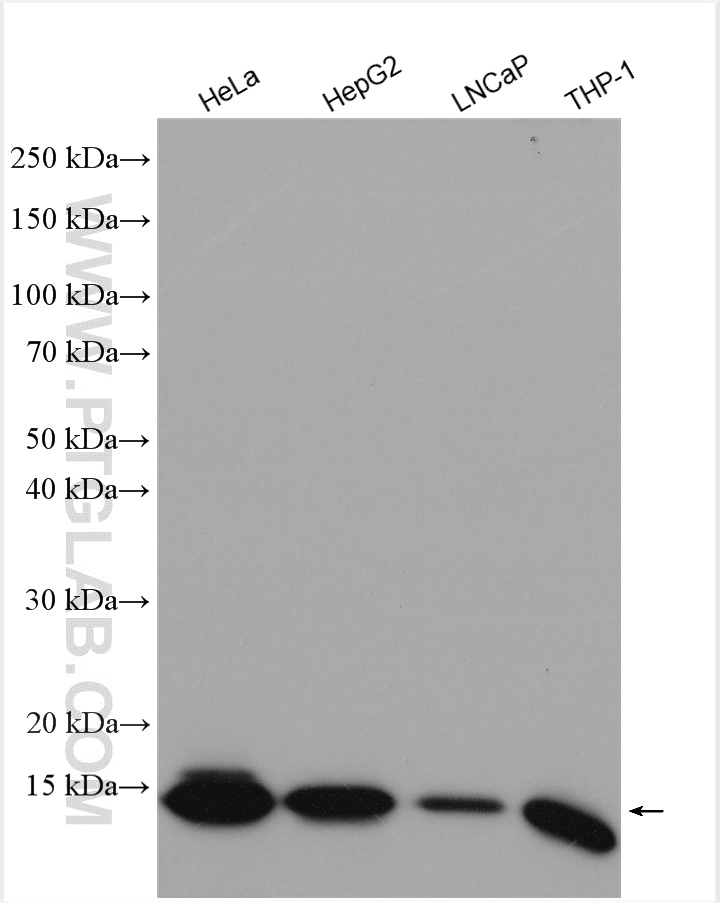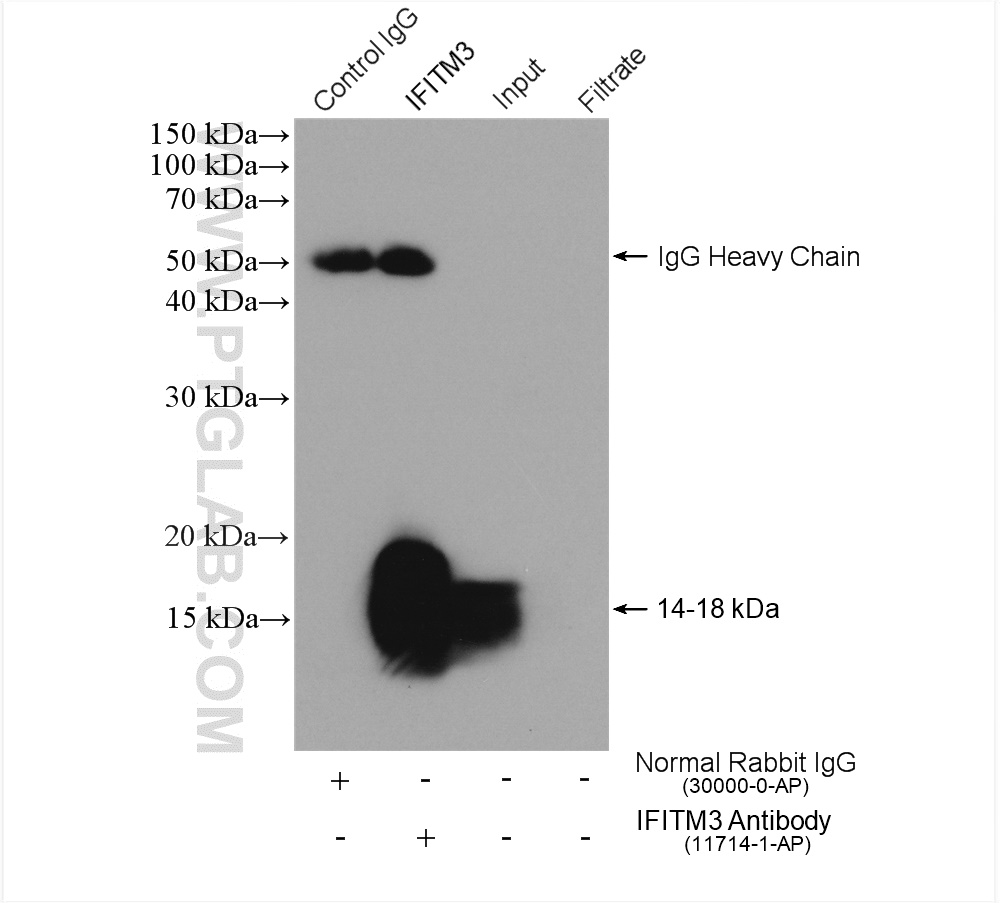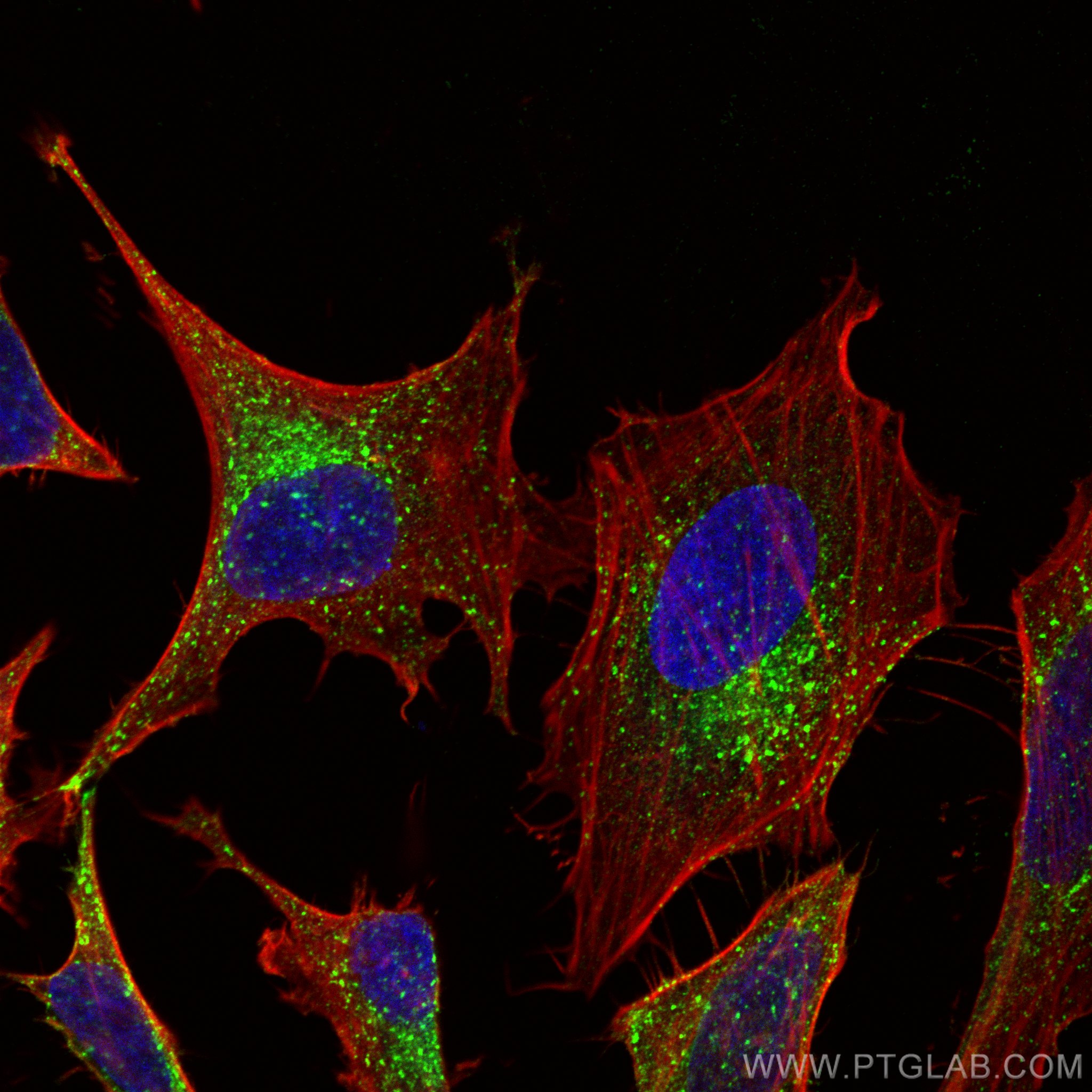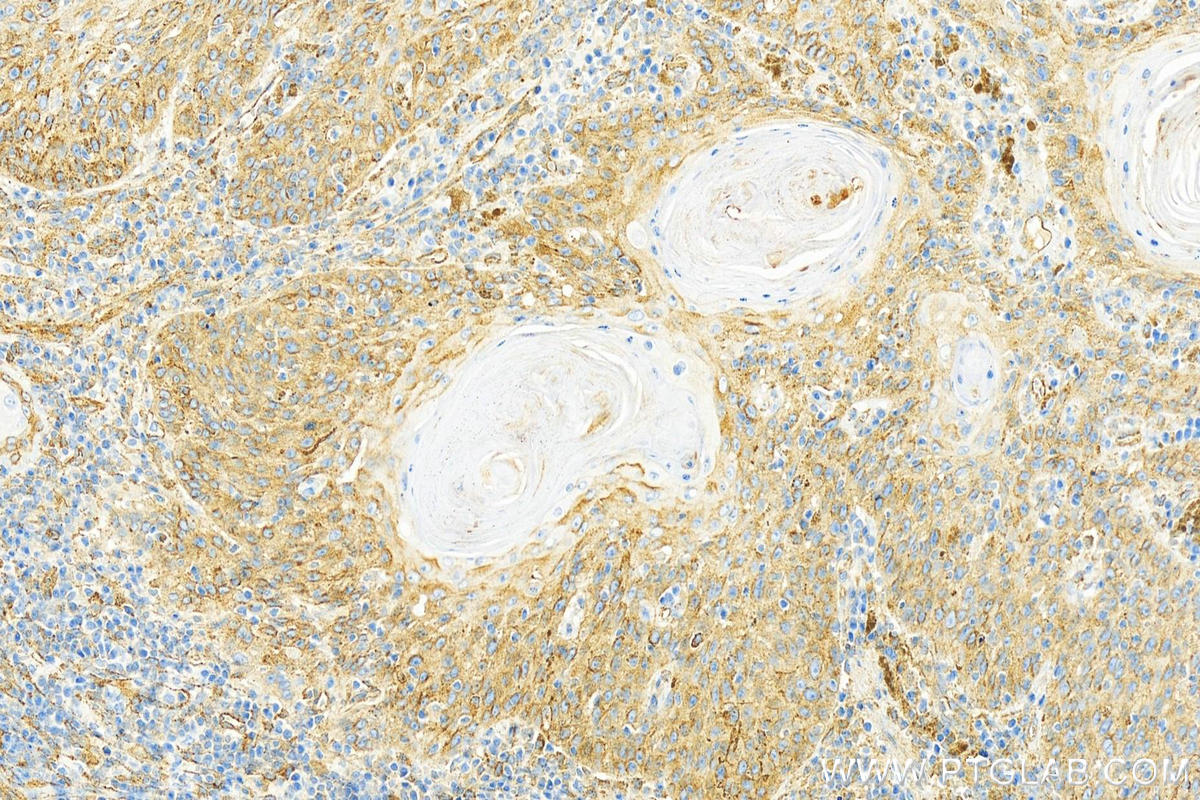验证数据展示
经过测试的应用
| Positive WB detected in | HeLa cells, HepG2 cells, LNCaP cells, THP-1 cells |
| Positive IP detected in | HepG2 cells |
| Positive IHC detected in | human skin cancer tissue Note: suggested antigen retrieval with TE buffer pH 9.0; (*) Alternatively, antigen retrieval may be performed with citrate buffer pH 6.0 |
| Positive IF/ICC detected in | HeLa cells |
推荐稀释比
| 应用 | 推荐稀释比 |
|---|---|
| Western Blot (WB) | WB : 1:5000-1:50000 |
| Immunoprecipitation (IP) | IP : 0.5-4.0 ug for 1.0-3.0 mg of total protein lysate |
| Immunohistochemistry (IHC) | IHC : 1:2000-1:8000 |
| Immunofluorescence (IF)/ICC | IF/ICC : 1:400-1:1600 |
| It is recommended that this reagent should be titrated in each testing system to obtain optimal results. | |
| Sample-dependent, Check data in validation data gallery. | |
产品信息
11714-1-AP targets IFITM3 in WB, IHC, IF/ICC, IP, CoIP, ELISA applications and shows reactivity with human samples.
| 经测试应用 | WB, IHC, IF/ICC, IP, ELISA Application Description |
| 文献引用应用 | WB, IHC, IF, IP, CoIP |
| 经测试反应性 | human |
| 文献引用反应性 | human, mouse, rat, pig, canine, chicken, goat, african green monkey |
| 免疫原 |
CatNo: Ag2285 Product name: Recombinant human IFITM3 protein Source: e coli.-derived, PGEX-4T Tag: GST Domain: 1-133 aa of BC006794 Sequence: MNHTVQTFFSPVNSGQPPNYEMLKEEHEVAVLGAPHNPAPPTSTVIHIRSETSVPDHVVWSLFNTLFMNPCCLGFIAFAYSVKSRDRKMVGDVTGAQAYASTAKCLNIWALILGILMTILLIVIPVLIFQAYG 种属同源性预测 |
| 宿主/亚型 | Rabbit / IgG |
| 抗体类别 | Polyclonal |
| 产品类型 | Antibody |
| 全称 | interferon induced transmembrane protein 3 (1-8U) |
| 别名 | IP15, Interferon-inducible protein 1-8U, Interferon-induced transmembrane protein 3, IFITM2/3, DSPA2b |
| 计算分子量 | 133 aa, 15 kDa |
| 观测分子量 | 14 kDa |
| GenBank蛋白编号 | BC006794 |
| 基因名称 | IFITM3 |
| Gene ID (NCBI) | 10410 |
| RRID | AB_2295684 |
| 偶联类型 | Unconjugated |
| 形式 | Liquid |
| 纯化方式 | Antigen affinity purification |
| UNIPROT ID | Q01628 |
| 储存缓冲液 | PBS with 0.02% sodium azide and 50% glycerol, pH 7.3. |
| 储存条件 | Store at -20°C. Stable for one year after shipment. Aliquoting is unnecessary for -20oC storage. |
背景介绍
IFITM3, also named as interferon-inducible protein 1-8U, belongs to the CD225 family. It is IFN-induced antiviral protein that mediates cellular innate immunity to at least three major human pathogens, namely influenza A H1N1 virus, West Nile virus (WNV), and dengue virus, by inhibiting the early steps of replication. IFITM3 is identified as interferon-induced cellular proteins that restrict infections by retroviruses and filoviruses and of influenza virus and flaviviruses, respectively. IFITM3, the most potent antiviral IFITM, was found to inhibit an uncharacterized early infectious event after VSV endocytosis, but before primary transcription of its viral genome. IFITM proteins are viral restriction factors that can inhibit infection mediated by the influenza A virus (IAV) hemagglutinin (HA) protein. They differentially restrict the entry of a broad range of enveloped viruses, and modulate cellular tropism independently of viral receptor expression. Catalog#11714-1-AP is a rabbit polyclonal antibody raised against the full-length of human IFITM3.
实验方案
| Product Specific Protocols | |
|---|---|
| IF protocol for IFITM3 antibody 11714-1-AP | Download protocol |
| IHC protocol for IFITM3 antibody 11714-1-AP | Download protocol |
| IP protocol for IFITM3 antibody 11714-1-AP | Download protocol |
| WB protocol for IFITM3 antibody 11714-1-AP | Download protocol |
| Standard Protocols | |
|---|---|
| Click here to view our Standard Protocols |
发表文章
| Species | Application | Title |
|---|---|---|
Science A human apolipoprotein L with detergent-like activity kills intracellular pathogens. | ||
Cell A family of conserved bacterial virulence factors dampens interferon responses by blocking calcium signaling. | ||
Science T cell memory. Skin-resident memory CD8⁺ T cells trigger a state of tissue-wide pathogen alert. | ||
Cell Stem Cell Human microglia states are conserved across experimental models and regulate neural stem cell responses in chimeric organoids. | ||





